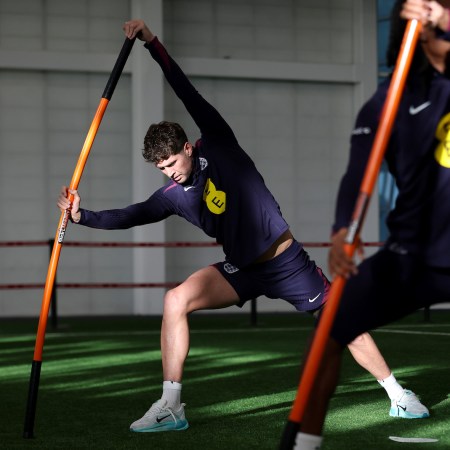“When I can close my laptop and beat everyone else to The Home Depot on a Friday afternoon, I’m a happy man.”
That’s Tim, an insurance sales rep from Massachusetts, riffing on his dream end-of-workweek. He isn’t talking about 6 p.m., but noon — and even earlier if he can manage it. At a time when a number of companies and governments are trialing four-day workweeks, leading to frequent, impassioned debates in LinkedIn-land over whether the concept could ever work in the States, some employees are simply taking matters into their own hands.
They’re ducking out early, launching their own unofficial four-day workweeks in the process. It smacks of Ferris Bueller-level insolence, but this off-book PTO is rarely as cheeky (or epic) as a class clown playing hooky.
Workers of all ages, of the sort who can pull this off — specifically: those who don’t have to physically report to a school, hospital, factory, or brick and mortar — are using the pandemic’s fallout to start their weekends a bit earlier and turn “Summer Fridays” season-agnostic. They’re doing so gently, with runs, naps, lunches, trips to the store, time in the backyard with kids and head-starts on weekend chores.
“Fridays are WFH for my company and I definitely work less,” says Leo, a San Francisco-based tech engineer. “I have gotten into a habit of going to a ramen place on Friday afternoons that is otherwise impossible to get into. Now my Maps app will even recommend it when I open my phone on Friday at 1 p.m.”
To be clear, Leo is still logging in. He reports averaging about four hours of work on a Friday. But instead of having to sit in the office for hours after wrapping up his day’s most pressing matters, Leo is now free to grab food or meet up with friends — many of whom are taking advantage of the exact same workplace situation. “I used to go to the office for roughly eight hours on Friday,” he says. “But I was only ‘working’ for five to six of those. From what I can tell, colleagues and partners have adjusted similarly.”
Leo, who is coming up on his 28th birthday, appreciates that this shake-up has arrived relatively early in his professional career. “I’m definitely content with my workweek these days. I’ve joked that trading two years of pandemic shutdowns for a thirty-year career of shorter weeks is a great deal for people our age.”
According to Sophia, an account executive at a healthcare advertising agency, these afternoons have already started to feel somewhat sacred: “Summer Fridays apply year-round now. No one wants to work on a Friday afternoon anymore. If the task at hand can be pushed back to Monday, or next week, then that’s the option everyone’s going to agree on. The worst is when every once in a while, random work comes up. It can feel almost infuriating, as if someone else has interrupted a day you’ve set aside for relaxing, or…you know, recovering from Thursday night.”
For the most part, though, Sophia’s firm has worked to lightly formalize their new weekly workflow, which, short of anointing a four-day workweek, has removed some secrecy from the equation. We’ve reported in the past on the rise of the clandestine, pandemic-fueled power nappers. A number of employees have played cat and mouse with their managers for almost two years now — ever since white collar and “laptop” professions settled into hybrid working patterns in late 2020 — and continue to view remote work as an opportunity to get away with things.
But many others have spent the last several months crafting a healthy, open dialogue with their superiors, where the new normal is acknowledged and more or less planned-around. Sophia says that her agency’s philosophy on post-pandemic Fridays is clear: “No one schedules meetings for a Friday afternoon, or hardly any Friday at all. We all agree, ‘Let’s get everything done by early afternoon.’ And my team embraces a collective ‘No Camera Fridays’ policy.”
That’s to say — there’s no pressure to show your face on Zoom, which means you could theoretically dial into a meeting from the car, an airport, or a bar. “It’s amazing how I can leave my computer at 2 p.m. and not have a single person reach out to me for the rest of the day,” Sophia says. “We’re not bothering each other because we’re all doing the same thing.” She’ll use that extra time to hit the gym, run errands, or meet a friend for a drink. With summer firmly upon us, she plans to leave a bit earlier for weekend trips to the beach. It’s a smart play, considering interstates and TSA are already reporting their highest passenger volumes in years.
Sitting in traffic is one way to witness this “get ahead” workweek with your own eyes. But then, so is going to any bar on a Friday (“6 p.m. is the new 8 p.m.,” a New York chef declared last summer), or trying to book a tee-time at your local course, or simply walking to a park. You may remember that when the pandemic first arrived, there was a massive running and cycling “boom.” It which was eventually supported with hard data (Strava subscriptions, equipment sales, etc.), but as it started, it was evident just from taking a gander out your window. People were out. That’s obvious now, too; there are more people walking dogs, sipping coffee, or splaying out in the sun than you could have ever reasonably expected on a Friday just three years ago.
The implications on mental health and work-life balance are huge. Let’s face it: the current system is broken. Worker burnout is rampant, thanks to a pandemic-borne workflow that brought direct messages, emails and video calls (too often taken in bedrooms, once an untouchable sanctuary) to all hours of the day. At the same time, social scientists have outed unlimited PTO as a mirage; an overwhelming majority of workers fear actually cashing in on the supposed perk, for fear of seeming replaceable.
Plus, even as “pick-your-own” hybrid models appear to empower employees, those who spend most of their time working from home can’t expect the same professional mobility as peers who show up to the office. Is that fair? If they’re meeting their numbers and/or deadlines, of course not. Regardless, nascent research indicates that full-time WFH employees can expect a 50% lower rate of promotion after 21 months, compared to their office colleagues. (This fact disproportionately impacts working mothers, who are far more likely to seek paid workdays at home than working fathers.)
A lower-key workweek appears to grant some autonomy back to employees, though, at a time when they’re at their most overworked and anxious. If an employee can, say, pop into an office for two days a week while keeping Fridays untouchable — at a company where no one goes to work on Fridays — or alternatively, work for a fully-remote firm where tumbleweeds are blowing through Teams or Slack at the end of the week, then that’s a rare win for worker well-being. It’s no secret that having more time to oneself, whether for leisure or decompression, is good for mood, mentality and longevity.
This philosophy has led some movers and shakers to institute shorter workweek policy themselves. You may have read about successes in Iceland and New Zealand, or pilot programs rolled out by Kickstarter and Shake Shack. In these instances, higher-ups have mandated, not simply tolerated, that employees step back from work. The reports have been fascinating. In Iceland, where 1% of the nation’s entire population spent years working five fewer hours than their peers each week (and earned equal pay along the way), the experiment was deemed a resounding success.
The authors of the experiment wrote: “Participating workers took on fewer hours and enjoyed greater well-being, improved work-life balance and a better cooperative spirit in the workplace — all while maintaining existing standards of performance and productivity.”
These programs aren’t always focused on eliminating Friday (a concept that the United Kingdom and the United States seem uniquely besotted by). They’re in the business of giving hours back to workers wherever possible. The idea is that rest and relaxation recharges our collective cognitive battery, which allows us to come back to work with fresh perspective and vigor next time we sign on. This is still difficult for some titans of industry to wrap their brains around, but a mountain of research has confirmed that guaranteed time-off lowers stress levels among staff and increases worker retention, while keeping productivity marching right along.
There’s a jaw-dropping headline in The New York Times, published on September 23, 1956: “Nixon Foresees Four-Day Workweek.” Then Vice President Richard Nixon details a “not too distant future,” where a four-day workweek and “fuller family life” would be available to every American. He said at the time: “These are not dreams or idle boasts — they are simple projections of the gains we have made in the last four years. Our hope is to double everyone’s standard of living in 10 years.”
Nearly 70 years later, with employee benefits as politicized and polarizing as any other issue, it would be extra astonishing to hear a leader from Nixon’s party advocate in support of labor. In fact, the closest any legislature has come to instituting a shorter workweek was in California, where Assembly Bill 2932 was shelved earlier this month due to implementation concerns. Certain companies would’ve been responsible for paying workers for 32 hours instead of 40 — without changing the rate.
Without concrete legislation (if California doesn’t see an opening at present, it’ll be a while before the rest of the country does) workplace strategy is left to the whims of employers. But workers have more power than they think. In the wake of the Great Resignation — so official now it even has its own Wikipedia page — employees should feel licensed to get a feel for company culture while researching and interviewing. And these days, that calculus ought to absolutely include weighing a corporation’s approach to Fridays.
For years, companies used free snacks, park views and ping pong tables to entice talent; but where’s the value in any of that, when, for 60% of the workweek, downtown is a ghost town? If work demands have stretched out of the office-sphere and into the personal lives of employees, then how one gets to spend that personal time could also be considered “company culture.” If a worker accepts a job and immediately starts abusing that time, chances are you’ll notice pretty quickly. But is there trust in daring employees to misbehave? Treating the office like a holding pen, or running surveillance on their keyboard activity…that’s just domineering insecurity, usually under the guise of a manager trying to foster a “family atmosphere.”
Besides, when workers create their own shorter workweeks on a personalized, ad hoc basis, chances are they’ll do so in a manner that benefits both their interests and the interests of the company. This is actually a criticism of shorter workweek programs — when Friday is roundly “banned,” some workers might feel like they have to cram all their work into the late hours of Thursday. Cross-departmental projects could also suffer in the shuffle of consistent long weekends. When an employee makes their own time, though, they learn exactly how to stay on top of their work, and optimize their hours spent not doing it.
Obviously, some workers don’t have the opportunity to carve out shorter workweeks, due to the structure or industry of their jobs. Wage-earners and shift-workers have to show up on Fridays. All the time. And a number of workers in higher-income brackets are expected to be present (if not in the office, at least on the computer all day), if their boss needs something looked at. The “pay your dues” culture is alive and well, pandemic notwithstanding. When I texted a lawyer friend about this story, he wrote back: “I wish I could offer a perspective but doesn’t really apply in my case.”
That’s perspective enough. The unofficial four-day workweek occupies a bizarre nexus of privilege. It doesn’t mean you make the most money. And doesn’t necessarily mean you do something important, or unimportant. It just means you can do your job with an Apple product, and are surrounded by at least a couple other coworkers who would rather eat ramen, or have a drink, or go to the beach then sit through a meeting. (That’s a lot of people.)
For Jake, a manager at an investment startup, the change can be summed up rather simply: “It’s night and day,” he says. “I’ve worked at two companies during the pandemic. One observed Wall Street stock market hours and even there I found my colleagues weren’t putting in a full effort on Fridays. I work three to four good hours on Friday with my new company. Enough to feel productive. No one wants to lose this privilege so if something is needed, you make sure you’re around…It’s just so much more manageable. I’ll go for an afternoon run, or grab a coffee, or just sit in a park to relax.”
Americans have long marveled at the day-to-day rhythms of Europeans: their lengthy lunch breaks and lengthier dinners, their strolls and siestas, their summers spent off the grid. The subtext implies that theirs is an extremely uncommon and unattainable way to live. What do we have to do to live like that? Well, live through a pandemic, it would appear. All-season Fridays are here. They seem special, almost otherworldly, but they’re probably how we were supposed to be living all along, as unremarkable as a run to Home Depot.
The Charge will help you move better, think clearer and stay in the game longer. Subscribe to our wellness newsletter today.
























